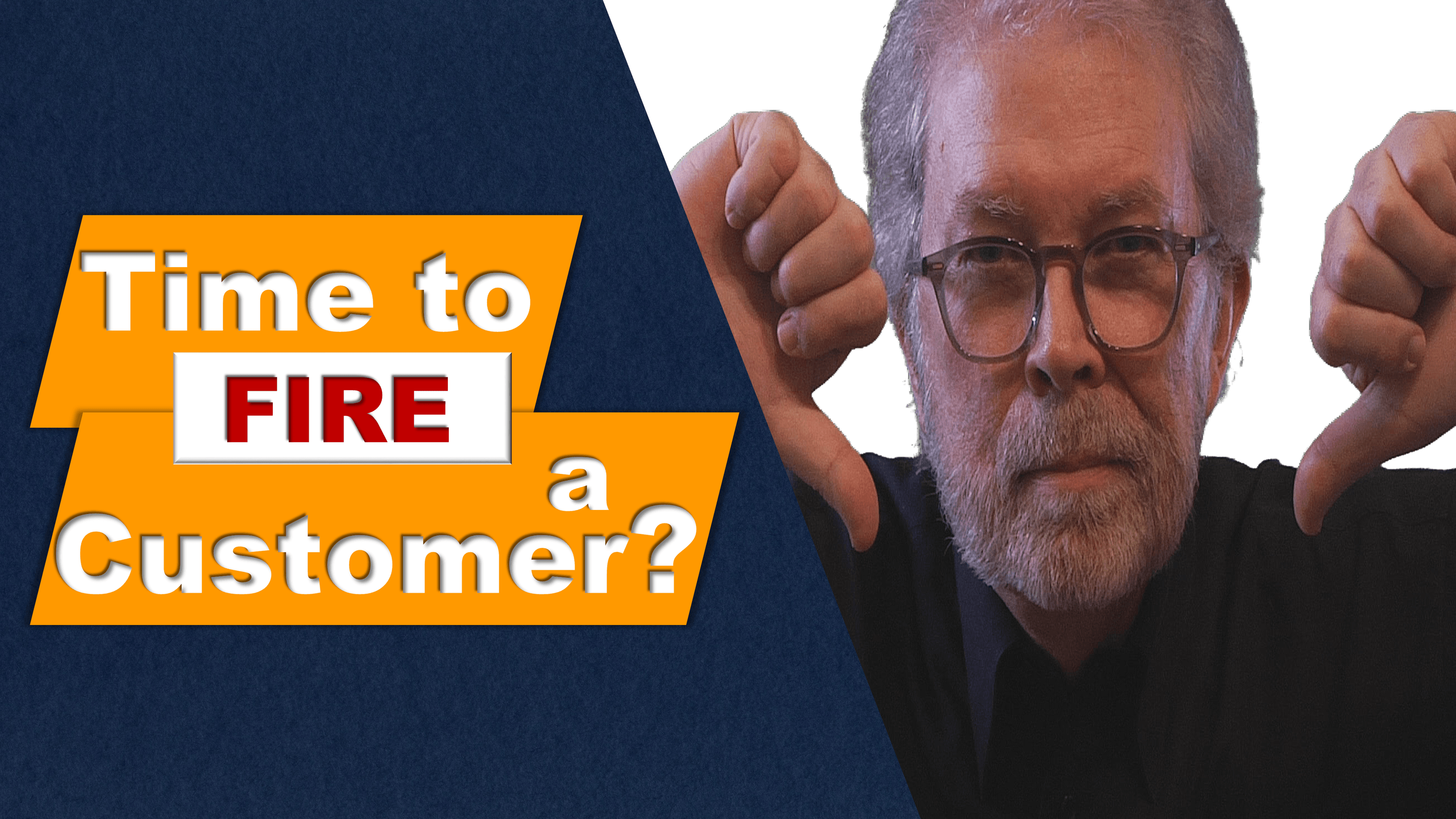You aren’t in business to lose customers. The reality is, however, that the customer isn’t always right and not every customer is right for you. There are times when getting rid of a customer can energize your business and open the door for growth.
Every industry and business sector are a little different, but here are four general principles for when it is time to move on from a customer.
- They simply aren’t a good customer.
There are customers that are more trouble than they’re worth. They don’t pay on time. Their checks bounce and their credit cards are always rejected. They have unreasonable expectations, and you just can’t make them happy.
The common factor for this type of customer is that they cost you more than they’re paying. You can’t charge them extra to accommodate that hassle factor, and there is no opportunity to make the profit you want because this customer is eating your margin.
Setting clear boundaries and managing expectations can help, and it is worth a conversation with them if they have been a good customer in the past. Just know that you might need to move on if you can’t provide value to them in a way that is profitable for you.
- The customer creates a disruption that violates the type of business you want to run.
The key phrase is “creates a disruption.” This is the customer that makes a scene at a restaurant and ruins the experience for everyone, abusers, your team, or even worse, asks you to do something that’s illegal, or unethical, or immoral.
This should be easy, but businesses struggle with this one because they allow their fear over losing one customer to prevent them from taking a long-term view. Standing up for your values sends a strong message to your customers and employees.
- The customer is no longer a good fit for you.
A change in your business model, target market, or product/service offering creates the need to let go of old customers to move toward better ones. This is a difficult decision—especially if a client has been with you for a long time. And, it is crucial for the continued growth of your business. Moving on from your least profitable or less than ideal customers can free up resources and create the urgency to pursue your ideal customer.
- You are no longer a good fit for your customer.
Imagine that you have a customer with needs that have outgrown your capability. They’ve been a great partner, but continuing to serve them would mean developing or delivering a product or service that takes you away from your focus.
Now let’s add another dimension … what they want you to do is profitable and you could do a great job at it with a little effort.
Do you take the business? There isn’t one correct answer.
You could refer your customer to someone else if you are certain that taking this business moves you away from your vision.
On the other hand, what if the customer’s request is leading you toward an unmet need in the marketplace? Taking the business could open the door to a new product or service line.
The key is to make an informed decision on what’s best over the long run rather than what your business needs in the moment. From my personal experience, there have been a handful of requests I should have refused but didn’t because my sales funnel was empty at the time.
What about value conflicts?
This is a tricky one.
Some examples of firing or refusing to do business with a customer are illegal. If you are tempted to fire a customer for one of those reasons, don’t.
At the same time, standing up for your company’s values sends a powerful message to other customers and your team.
Here’s my best advice if you find yourself in a situation where doing business with a customer violates your core values:
- Consider the impact of your decision both now and in the future.
- Consult legal counsel where you live to understand the laws.
- Look for ways to resolve the conflict that serve you and the customer.
- Make the best choice that protects your values without violating the law.
When you do have to fire a customer, do so with the utmost possible respect. Even if they’re wrong, and you can’t work with them any longer, they are still the customer. Customers aren’t inanimate objects. They’re humans and deserve to be treated courteously and professionally.
Remember: Don’t allow fear to make you keep a customer. You aren’t in the business of firing them, but it can be positive.
Randy Pennington is an award-winning author, speaker, and leading authority on helping organizations achieve positive results in a world of accelerating change. To bring Randy to your organization or event, visit www.penningtongroup.com , email info@penningtongroup.com, or call 972.980.9857.





